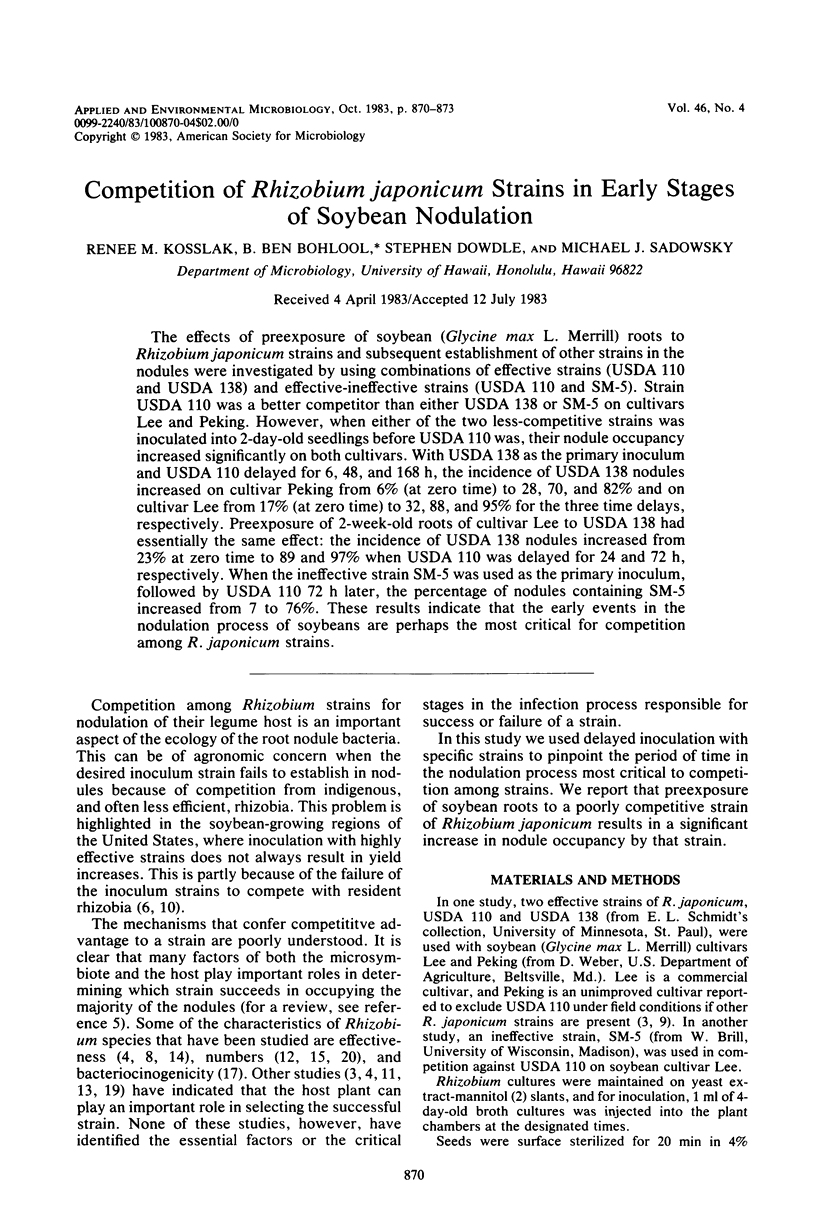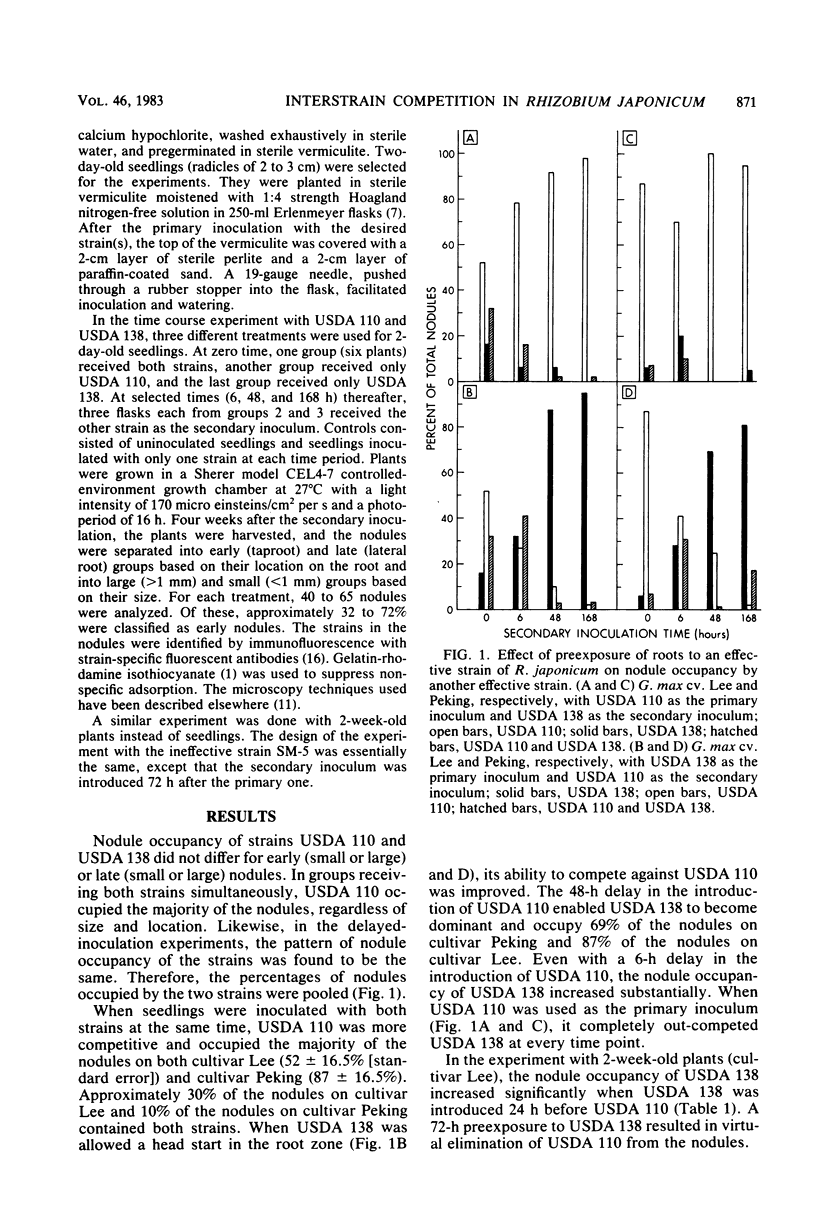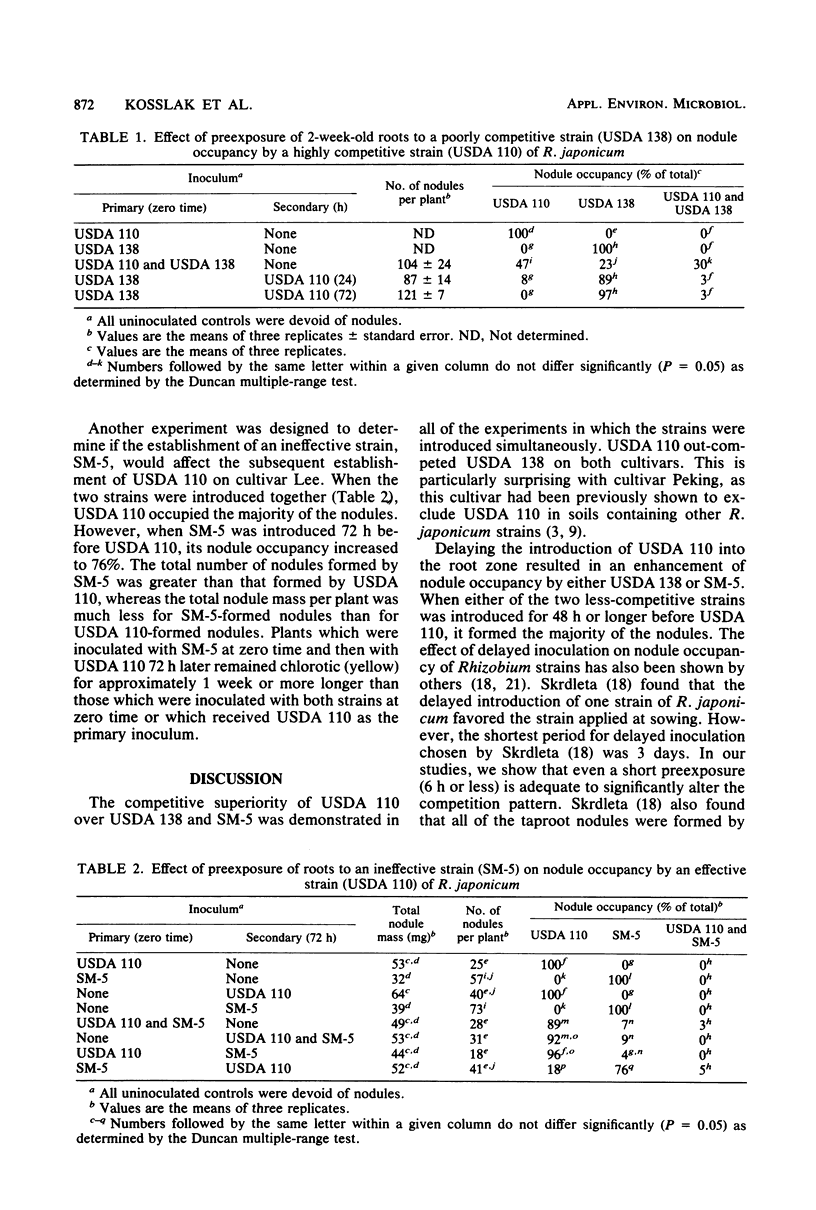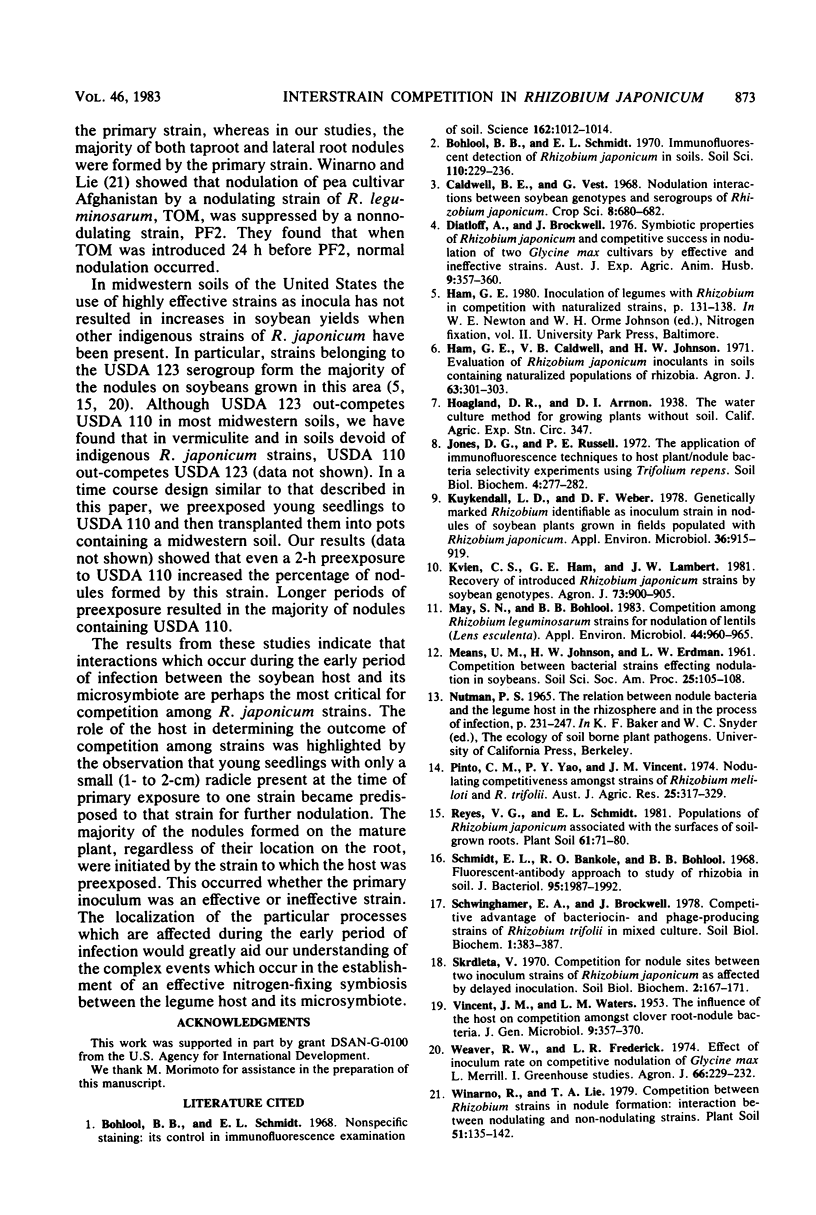Abstract
The effects of preexposure of soybean (Glycine max L. Merrill) roots to Rhizobium japonicum strains and subsequent establishment of other strains in the nodules were investigated by using combinations of effective strains (USDA 110 and USDA 138) and effective-ineffective strains (USDA 110 and SM-5). Strain USDA 110 was a better competitor than either USDA 138 or SM-5 on cultivars Lee and Peking. However, when either of the two less-competitive strains was inoculated into 2-day-old seedlings before USDA 110 was, their nodule occupancy increased significantly on both cultivars. With USDA 138 as the primary inoculum and USDA 110 delayed for 6, 48, and 168 h, the incidence of USDA 138 nodules increased on cultivar Peking from 6% (at zero time) to 28, 70, and 82% and on cultivar Lee from 17% (at zero time) to 32, 88, and 95% for the three time delays, respectively. Preexposure of 2-week-old roots of cultivar Lee to USDA 138 had essentially the same effect: the incidence of USDA 138 nodules increased from 23% at zero time to 89 and 97% when USDA 110 was delayed for 24 and 72 h, respectively. When the ineffective strain SM-5 was used as the primary inoculum, followed by USDA 110 72 h later, the percentage of nodules containing SM-5 increased from 7 to 76%. These results indicate that the early events in the nodulation process of soybeans are perhaps the most critical for competition among R. japonicum strains.
Full text
PDF



Selected References
These references are in PubMed. This may not be the complete list of references from this article.
- Bohlool B. B., Schmidt E. L. Nonspecific staining: its control in immunofluorescence examination of soil. Science. 1968 Nov 29;162(3857):1012–1014. doi: 10.1126/science.162.3857.1012. [DOI] [PubMed] [Google Scholar]
- Kuykendall L. D., Weber D. F. Genetically marked Rhizobium identifiable as inoculum strain in nodules of soybean plants grown in fields populated with Rhizobium japonicum. Appl Environ Microbiol. 1978 Dec;36(6):915–919. doi: 10.1128/aem.36.6.915-919.1978. [DOI] [PMC free article] [PubMed] [Google Scholar]
- May S. N., Bohlool B. B. Competition Among Rhizobium leguminosarum Strains for Nodulation of Lentils (Lens esculenta). Appl Environ Microbiol. 1983 Mar;45(3):960–965. doi: 10.1128/aem.45.3.960-965.1983. [DOI] [PMC free article] [PubMed] [Google Scholar]
- Schmidt E. L., Bakole R. O., Bohlool B. B. Fluorescent-antibody approach to study of rhizobia in soil. J Bacteriol. 1968 Jun;95(6):1987–1992. doi: 10.1128/jb.95.6.1987-1992.1968. [DOI] [PMC free article] [PubMed] [Google Scholar]
- VINCENT J. M., WATERS L. M. The influence of the host on competition amongst clover root-nodule bacteria. J Gen Microbiol. 1953 Dec;9(3):357–370. doi: 10.1099/00221287-9-3-357. [DOI] [PubMed] [Google Scholar]


